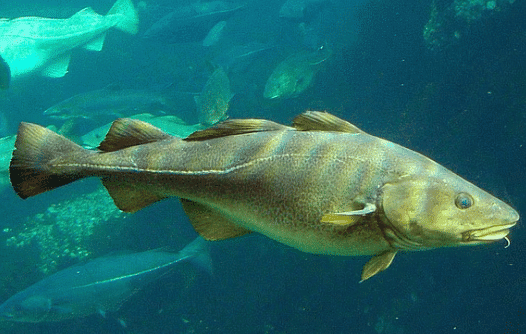JAMB Exam > JAMB Notes > Biology for JAMB > Super Class - Pisces (Chondrichthyes & Osteichthyes)
Super Class - Pisces (Chondrichthyes & Osteichthyes) | Biology for JAMB PDF Download
| Table of contents |

|
| Pisces |

|
| Further Classification of Pisces |

|
| Physiological Aspects of Pisces |

|
| Neurological and Sensory Features of Pisces |

|
Pisces
- Pisces are aquatic vertebrates with gills for respiration and lack a true spine.
- They inhabit fresh, marine, and brackish water environments.
- Fins are the organs of locomotion, which can be paired or unpaired.
- The study of fishes is known as ichthyology.
- It is believed that they evolved from sea-squirts, resembling primitive fish.
 Pisces
Pisces
Classification of Pisces:
- Pisces belong to the Kingdom Animalia, Phylum Chordata, Super-class Gnathostomata, and Class Pisces.
Characteristics of Pisces:
- Pisces have a streamlined body with a close circulatory system.
- The body is divided into head, trunk, and tail regions.
- The skeleton can be bony or cartilaginous.
- They exhibit separate sexes and possess a well-developed digestive system.
- Fertilization can be internal or external, and they have scales for external covering.
- They can display herbivorous, carnivorous, or omnivorous feeding habits.
Further Classification of Pisces
Placodermi:
- Extinct class of fishes, known through fossils.
- First fishes with jaws, survived until the Permian period of the Paleozoic era.
- Characterized by bony endoskeleton and heterocercal caudal fin.
- Includes orders like Arthrodiriformes and Antiarchiformes.
Chondrichthyes:
- Also known as elasmobranch, found only in marine waters.
- Features absence of operculum, cartilaginous endoskeleton, and heterocercal caudal fin.
- Subclasses include Selachi and Bradyodonti.
Osteichthyes:
- Largest class of vertebrates with bony internal skeletons.
- Divided into subclasses like Dipnoi, Crossopterygii, and Actinopterygii.
- Presence of autostylic jaw suspension and air bladder in this class.
Question for Super Class - Pisces (Chondrichthyes & Osteichthyes)Try yourself: Which class of fishes is known through fossils and includes orders like Arthrodiriformes and Antiarchiformes?View Solution
Physiological Aspects of Pisces
Respiration:
- Fishes respire through gills, with oxygen uptake and carbon dioxide release.
- Gill structures vary among species, with some possessing lungs for respiration.
Excretion:
- Main excretion in fishes is urea, with gills also serving as excretory organs.
- Special adaptations may be present in freshwater species for water excretion.
Circulation:
- Fish have a closed circulatory system with a two-chambered heart.
- Blood flow involves oxygenation in the gills before distribution throughout the body.
Reproduction:
- Fish reproductive organs are internal, with external fertilization being common.
- Examples include scattering eggs in water for fertilization and internal hatching in some species.
Neurological and Sensory Features of Pisces
Nervous System:
- The nervous system comprises the central nervous system (CNS) and peripheral nervous system (PNS).
- Control and coordination during swimming are key functions of the nervous system.
Sensory Organs:
- Fish possess specialized sensory organs for vision, hearing, and reproduction.
- Examples include eyes adapted for underwater vision and internal reproductive structures.
The document Super Class - Pisces (Chondrichthyes & Osteichthyes) | Biology for JAMB is a part of the JAMB Course Biology for JAMB.
All you need of JAMB at this link: JAMB
|
221 videos|172 docs|126 tests
|
FAQs on Super Class - Pisces (Chondrichthyes & Osteichthyes) - Biology for JAMB
| 1. What are the two super classes of Pisces? |  |
Ans. The two super classes of Pisces are Chondrichthyes (cartilaginous fish) and Osteichthyes (bony fish).
| 2. What are some physiological aspects of Pisces? |  |
Ans. Pisces have gills for breathing underwater, scales covering their bodies, and fins for swimming.
| 3. What are some neurological features of Pisces? |  |
Ans. Pisces have a simple brain structure compared to higher vertebrates, but they possess a lateral line system that helps them detect movement and changes in pressure in the water.
| 4. What are some sensory features of Pisces? |  |
Ans. Pisces have keen senses of sight, smell, and taste, which help them locate food and navigate their environment. They also have sensitive lateral lines that detect vibrations in the water.
| 5. How do Pisces differ from other classes of vertebrates in terms of their physiology? |  |
Ans. Pisces are unique in having gills for breathing underwater, scales for protection, and fins for locomotion, which are adaptations for their aquatic lifestyle.
Related Searches
















